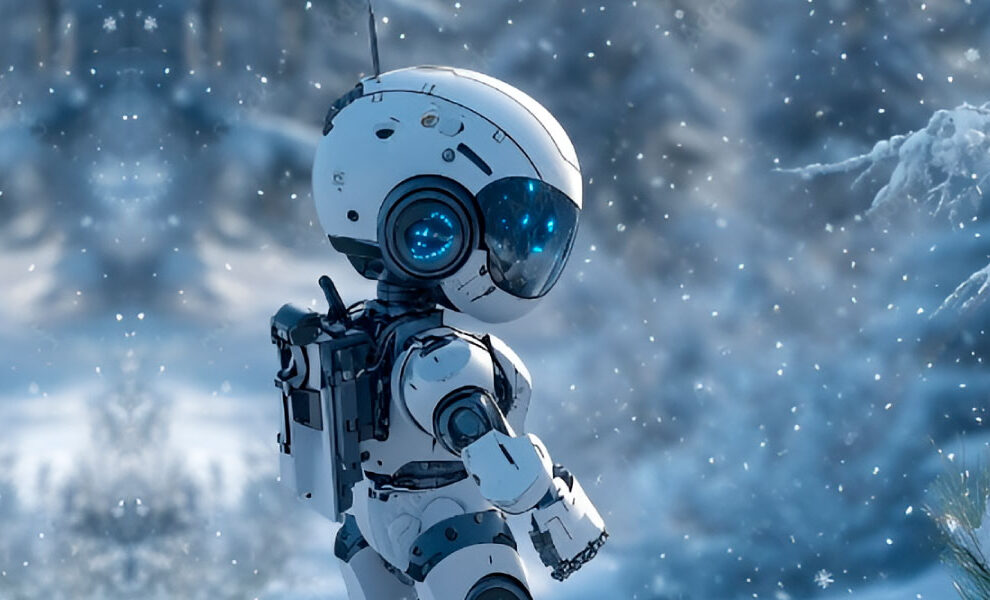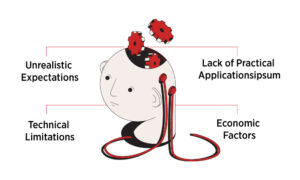Artificial Intelligence has transformed our lives, impacting everything from healthcare to entertainment. However, within this dynamic field, one important concept is called Winter AI. In this blog, we will explore what winter AI means, its historical context, and its implications for further technology.
Understanding AI
Artificial intelligence uses human intelligence and allows machines to perform tasks. It consists of methods such as problem-solving, learning, perception, reasoning, and language understanding. AI is helping humans through various applications such as virtual assistants (Siri and Alexa) to self-driving cars and recommendation systems on platforms like Netflix and Amazon.
As per the report published in May 2024, Artificial intelligence is expected to grow at USD 1.33 Trillion in 2030, with a CAGR of 35.7%.
The AI Hype Cycle
The AI hype cycle means the rise and fall of expectations about AI technologies. In the early stage when new technologies related to AI arise, there is a lot of excitement and assumptions regarding the technology. Thus, a lot of investment, research funding, and media attention is observed for it. However, with time, the technology either soars beyond expectations, known as AI winter, or the technology that works more than expected, known as AI summer. The low point for interest and investment marks the beginning of what is known as Winter AI.
What is Winter AI?
Winter AI refers to time periods in the history of artificial intelligence where the progress in AI slows down, low funds are initiated, and interest wanes. This is a phase of disappointment with AI technologies, sometimes due to failing to meet expectations. Here, the word winter relates to a cold, dormant phase where little advancement happens compared with the summer periods of high growth and interest.
History of Winter AI
The concept of Winter AI is not new. In fact, AI has seen several cycles of hype and disappointment since it was established in the 1950s. The first AI winter occurred in the 1970s when early AI programs failed to deliver on their promises. The high hopes of researchers were not fulfilled, which resulted in low funding and many researchers left the field.
In the late 1980s and early 1990s, the second AI winter took place. After a brief period of success with expert systems, which were designed to replicate human’s ability to decide in specific domains, and after this short triumph, its limits surfaced. It was costly to maintain and scale. Once again, interest and funding were affected, this was another winter AI.
Causes of Winter AI
Factors contributing to Winter AI are:
Unrealistic Expectations: When new AI technologies are introduced, they come with a lot of promises. If that does not happen, disappointment and low funding will lead to less interest in that AI technology.
Technical Limitations: Early AI systems were unable to execute complex tasks. As researchers realize the limits of their technologies, their enthusiasm is diminished.
Lack of Practical Applications: If AI technologies do not find practical applications or fail to solve pressing problems, they may lose support from businesses and investors.
Economic Factors: Economic downturns can make fewer funds available for research and development into AI. This led to the winter period.
The Impact of Winter AI
The impact of Winter AI is significant. During these periods, many talented researchers may leave the field, and funding for AI projects may be affected. This would lead to a decline in the momentum of research as well as innovation. It becomes very difficult for the field to regain its energy once the researchers and inventors lose momentum. However, winter periods are not bad. They can provide an opportunity for reflection and recalibration, directing the researcher toward more feasible objectives and advantageous uses.
Signs of a New AI Spring
As we move further into the 21st century, there is a growing interest and investment in artificial intelligence (AI). This new phase is called ‘AI Spring,’ which has advancements in machine learning, natural language processing, and computer vision. Technologies such as deep learning and neural networks have led to major breakthroughs, allowing us to achieve things that once seemed impossible.
In addition, the integration of AI in the health sector, finance, and transportation sectors has been proven to solve problems in the real world. With both companies and governments putting a lot of money into AI research and development, we might be entering a new age of innovation.
Summary!
Winter AI refers to times when progress in artificial intelligence slows down due to a drop in interest and funding. This usually happens because expectations are not met and there are technical challenges. While these periods are tough, they offer a chance for reflection and learning.
As AI technology continues to advance, it is important to keep our expectations realistic while recognizing the potential of AI to change our world for the better. By understanding the cycles of AI, including its winter phases, we can appreciate how far we have come in this exciting field. Looking ahead, we can remain hopeful for a bright future where AI thrives, learning from past challenges to avoid repeating them.
Follow our latest blog updates at HiTechNectar!
Read More: How Augmenting Human Intelligence can Collaborate with AI?



